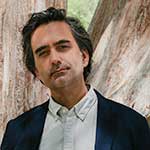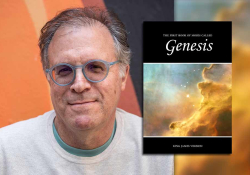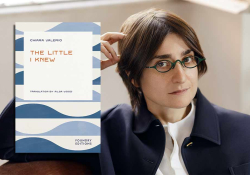The I-Know-Nothing Postulate: A Conversation with Ukrainian Filmmaker Sergei Loznitsa
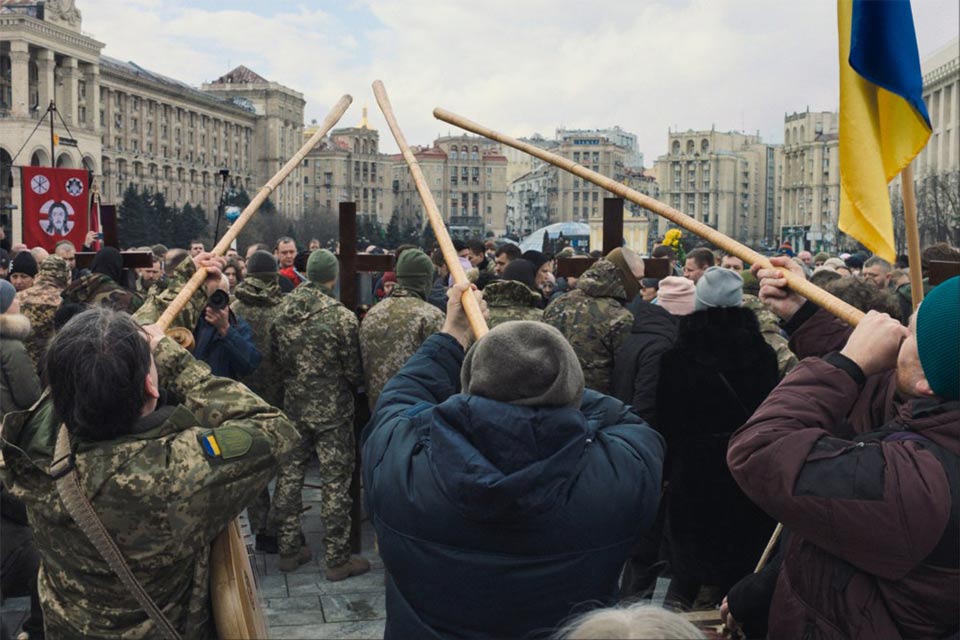
For three days in early March 2024, the Romanoff Center for Russian Studies at the University of Oklahoma hosted acclaimed Ukrainian film director Sergei Loznitsa for a series of meetings with students, discussions of his films, and a public presentation of his award-winning 2019 documentary about the death of Joseph Stalin, State Funeral. During the visit, I spoke with Loznitsa about the relationship between history and cinema, balancing documentary with narrative filmmaking, and much besides. The following is a portion of that conversation, translated from Russian.
Dustin Condren: Tomorrow we will be screening State Funeral, your film about the immense nationwide funeral ceremony held after the death of Joseph Stalin. Our audience at the University of Oklahoma is quite far removed from the Soviet Union of 1953! Certain audience members will be viewing with some previous knowledge of these events and with varying degrees of period context, but many others will have no knowledge of it. I am interested to see—since the film is so thoroughly immersive—how different audience members will respond to the experience.
Sergei Loznitsa: Yes, we will see! For me, curiosity is always the main thing. Myself, I am very interested in the unknown. When I approach the material that I work with as a filmmaker, I try to imagine it as though it were being seen through the eyes of a child. That is, as if I don’t know anything about it, approaching it from the perspective of my own ignorance. Because the initial impression that the material itself makes on me is very important to how I work with it.
Condren: Do you try to look for what’s universal in it and go from there?
Loznitsa: No, I simply begin composing as if I know nothing! And gradually I build this I-know-nothing into a something. Brick by brick, and always following the internal logic of the images. Which is a logic that everyone understands.
Condren: Like State Funeral, many of your documentary films are constructed entirely from historical footage that you have found in archives. You have said elsewhere that you do not consider yourself a historian and that your first task is always to be a film director. How exactly do you view that task with these archival films and their presentation of history? What is a filmmaker’s responsibility to what we might call the specifics of historical truth?
Loznitsa: To be honest, it was never my plan to make these archival films. The first one I made was about the Siege of Leningrad [1941–44]. It happened by accident. I was working at the St. Petersburg Studio of Documentary Films, editing my short film Portrait. I was friendly with the studio’s chief archivist, and my editing room was just next to his, so from time to time I would visit him during breaks. I happened to drop in once when he was transferring some footage that had been shot during the siege—of which there is actually very little, only about six hours of footage from a three-year siege. Strange! He was just testing some footage on the monitor without any sound, and from the first little frame that I saw I simply could not tear myself away. And that first impression was all it took. I could no longer focus on my other work.
All I could think about was: if I were to try and make a feature-length film out of this material, how would I do it? Was it even possible to make a film about what happened—because I couldn’t remember any films that really spoke openly about the siege. And what was it that happened, actually? An entire city was destroyed—well, maybe not completely, but its population was decimated. Millions of people either died, were evacuated, or were sent to the front. An utter disaster for the city, a scar on its body and its soul.
So, I began rewatching the films about the siege that had already been made, and most followed the very simple formula: it was hard, we were dying, but we survived, we triumphed, we are heroes. Something in that spirit. And I thought, what would I do? If I’m going to make this film, I want to do it totally differently. To really ask: how did this horror come to be?
It took me three years to make the film [Blockade]. I finished it in 2005. The film came together for me when I settled on its ending, when I decided to give it the finale I eventually did: a scene in which some German officers and soldiers are chosen for a public execution. And this execution was done not to take revenge on the enemy—the enemy was already defeated—but rather as a demonstration of government power. The execution is directed at those who observe it, the citizens, people who had already lived through the nightmare of the siege and then came out to watch someone else’s public death—so it is every bit as shocking as the rest of the film. It chills your soul to think about. When I decided to make the picture this way, I realized I could not comment on what I was showing. Because how can you comment? It prevents the viewer from just perceiving. And all I wanted was for the viewer to be placed there, back at this time.
Making this film, I encountered a series of formal problems, which I solved the only way I knew how. The solutions became structural principles for me. For example, I group different events together even if they take place at different times, so as not to return to the same visual theme in the film. So, I distill the theme of the city’s physical destruction into one place in the structure. From the perspective of historical fact, it’s wrong, because one thing might have been destroyed in 1942, another in 1941. But from the perspective of my artistic concept, it’s absolutely right, because if I organize it otherwise the viewer simply cannot watch what I’m showing them.
I had other questions about the material itself. Like, what about the corpses lying in the street? Leningrad was strewn with human bodies during the siege, and we must understand that the footage we have is the gentlest possible documentation of this. We know from accounts that at some points as many as ten thousand people were dying every day and it was simply impossible to clean it all up; the bodies were piling up, no one knew what to do with them. So, the dilemma is that I know I can’t show everything, because not everything was filmed. There’s a limit. I know that I cannot be a proper historian, because so much necessary material was never filmed.
But, on the other hand, when and how do I show the footage of these frozen corpses that I do have? Viewing this kind of thing is so shocking that one has to ask what could possibly be shown and digested after viewing such footage. I knew I had to save this for the climax of the film, place it toward the very end. I established the principle that I would build gradually and sequentially with the thematic material that I had to work with, starting lightly, for example, with the beginning of the blockade, the slow summer, training exercises, launching zeppelins, work with anti-aircraft guns, soldiers, tanks, water shortages, desperation over firewood . . . and then, eventually, the frozen corpses. I realized that I could only touch on each visual theme once and that the episodes had to go from less terrible to more terrible, and not vice versa. They can’t go in reverse because the viewer just wouldn’t be able to focus after the shock.
So, I found that there are some laws that must be followed, despite how one may want to do things and no matter how history may have played out in its specifics. These are the laws of cinema. If I make a film, then I must figure out how to create a form that does not contradict these laws. And if I have the option to either present things historically or to conform to the laws of cinema, then I choose the latter. I decide the issue in favor of cinema.
If I approach it this way, then I must be historically incorrect. But in terms of the thoughts that I’m attempting to give rise to in the viewer, in terms of preparing conditions that will allow the viewer to begin an internal discussion about what they’re seeing, I am extremely correct.
And I do not want to do anything that will disturb that internal discussion.
Condren: In addition to what sounds like a kind of rational inner discussion, it seems to me you also find it very important to provide the opportunity for a kind of visceral sensory or emotional contact with the experience of these historical moments, to really feel how it felt to be present.
Loznitsa: Yes! I started with Blockade, then I made another film like this and then another and another. These films are like a time machine for me. An opportunity to be transported. Now, if we are talking about a film like State Funeral, it’s the opportunity to be transported to the 1950s and be with those people that came to bid farewell to Stalin. An opportunity to feel them, to see them, without any distraction, to calmly watch and experience a time and a space. It’s what Mikhail Bakhtin called a chronotope. Real time and space—to feel it, to enter it.
I believe that cinema truly allows you to encounter historical chronotopes.
Historians have the luxury of really explaining in detail and presenting their view of how historical events developed in a given narrative: what was important, what was secondary, etc. But it is often very difficult to present all this in the most correct way, because so much of it depends on the historian’s point of view.
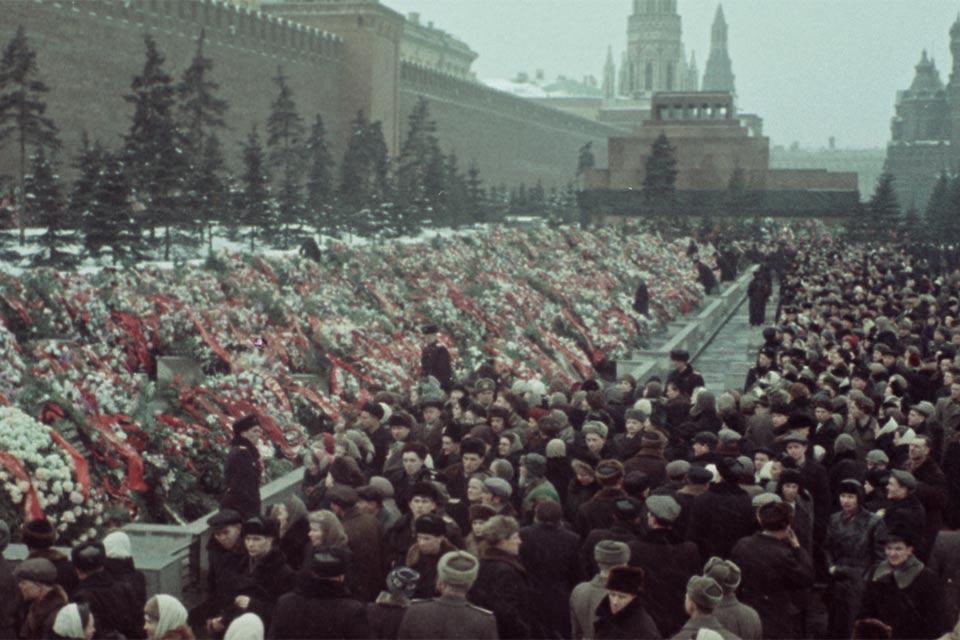
I believe that cinema truly allows you to encounter historical chronotopes.
Condren: And in relation to this, as everyone who has seen even one of your films knows, there is never any direct or voiceover narration. So that the film footage always seems to speak for itself. Interesting that you knew, even starting in 2003 or so, that this should be your method.
Loznitsa: Well, I made my first film in 1995. In the previous century! And that didn’t have voiceover either. In principle, of course, I believe that cinema should tell a story using sound and image. But this does not mean that this sound must be a human sound. I’ve never understood with voiceover who is supposed to be standing behind the scenes, doing all the talking. And what is it that they are saying? Interviews are fine—it’s a different genre.
I made one film that uses this format, Mr. Landsbergis (2021) about Lithuania’s struggle for independence. But no, otherwise, up to my latest film that I just finished shooting in Ukraine [The Invasion], I have observed this principle of no narration. There are internal sounds that exist inside the frame, and nothing else, absolutely.
All this is because I do not want to comment in any way. It seems to me that it is vital not to rely on literal, spoken language but to construct the film by using the language of cinema correctly. That is my credo.
It is vital not to rely on literal, spoken language but to construct the film by using the language of cinema correctly. That is my credo.
Condren: On the topic of structure in film, I’ve heard you use the word “dramaturgy” several times today, and it is obvious that you are meticulous in the dramaturgical structure of your documentaries. We’ve been holding screenings of a selection of your films leading up to your visit, and last week we showed Donbass (2018), which is a narrative film. Viewers who had already watched your documentaries The Natural History of Destruction (2022) and Babi Yar. Context (2021) were surprised to see that the same director who made these films could make an equally impressive fiction film—that these very different films could come from one and the same director. Which reminds us that there is a sort of bias that a person follows either the one path or the other. There are the well-known exceptions like Herzog or Godard or Varda—who work very successfully in—
Loznitsa: In different genres.
Condren: Exactly. Do you find it difficult to move from one genre to the other? Or is one perhaps closer to your heart?
Loznitsa: If I had my choice, I would just direct narrative feature films. For me, it’s not even a question. But a lot of money is needed for feature films, and raising money for them is very difficult. Especially for a director who lives in Germany and makes films about events in the Soviet Union or in Ukraine. My circumstances demand that I find opportunities to raise money from sources in different countries a little bit at a time, because I can’t, of course, for obvious reasons, do that sort of thing in Ukraine. Because of the war there is very limited funding in Ukraine. And to be honest, I don’t think I would even consider applying for funding in Ukraine because that money is needed elsewhere, and it is possible, if difficult, for me to find it from international sources.
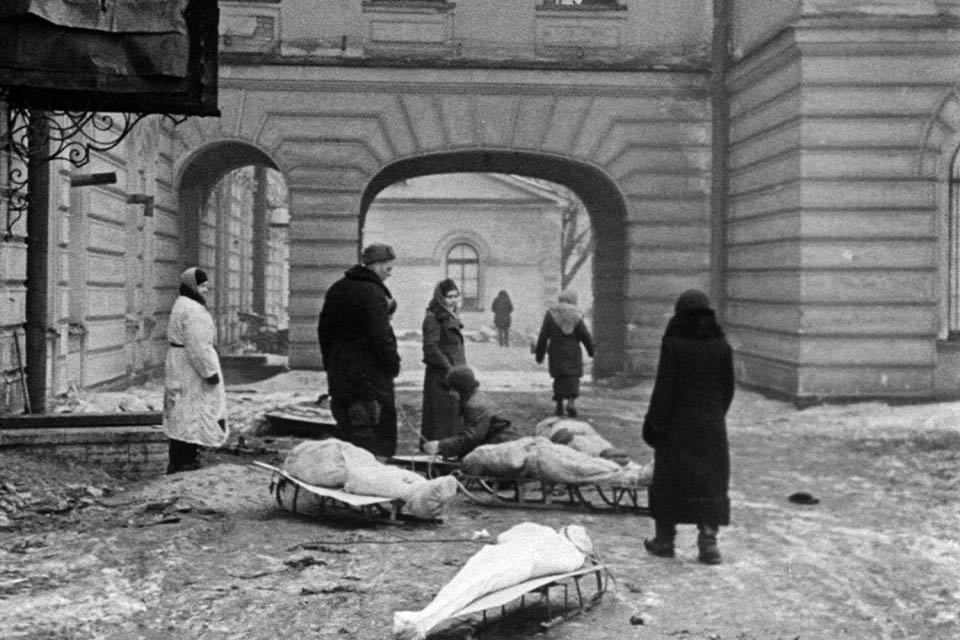
I don’t think I would even consider applying for funding in Ukraine because that money is needed elsewhere.
But right now, for example, I want to make a fiction film set in the USSR during the Stalin period—well, who is going to finance that? Russia? And even if they somehow would, I could not accept money that was covered in blood. So, my task is to try and convince people in Germany, France, or other places that the issues my film would address—totalitarianism, its structure, its laws, how it develops—are important issues, and that even if they aren’t necessarily pressing ones domestically, they will soon come knocking at the door. So, to repeat, narrative films are just not easy to finance. Documentaries are much easier to pull off, and that’s why I keep making them one after another!
To be honest, though, both genres are equally interesting. Perhaps the best situation would be to alternate between fiction and documentary. In documentary films, because the budgets are smaller, you can experiment with less risk, and then apply the results of these experiments to feature films.
Condren: So, there’s a kind of dialectical relationship between the two, in creative terms?
Loznitsa: There is. I have had to build my dramaturgical structures in different ways. For example, in the vignette structure that I commonly build my documentaries from—say in films like Maidan (2014) or The Trial (2018) or The Natural History of Destruction—none of these films have a central character that we follow—we see everything through the eyes of a constantly changing cast of characters. The heroes are different all the time, and they have an equal degree of importance, so you must build the story on something that holds together and goes beyond just continuity of characters.
And this experience helps me later to arrange similar structures for fiction films. Like Donbass, for example, where there is no central character and where every sequence is designed to flow independently from the previous one. This structure—the absence of a main character—allows me to rise above the plot and see it from a bird’s-eye view. That is, not to be close. And not to have the personality of the character influence the narrative events. Sometimes the personalities just get in the way, interfere with the viewer’s vision. So, I just get rid of it, but then that means I need to come up with a new way to link one episode to the next and let things flow naturally, so that the idea develops. I’m very interested in figuring out how to make this kind of atypical dramaturgy work.
Condren: And what does working with less conventional structures mean for you in terms of the film market, the festival circuit, selling your films, and so on?
Loznitsa: Of course, I think it is important that as many people as possible watch my films. So far, my experience is that people find the films interesting, people are watching them. And I do my best not to betray my artistic principles, while still trying to make things accessible to viewers. But cinema has a very short shelf life. A film can quickly lose its relevance, both because the medium evolves and because what it observes evolves, society is evolving. Very often older films do not stand up to time. And if a film is capable of standing up to time, then perhaps it isn’t so important whether it gets watched in the present—it might be watched in the future by many more people.
I think about this: if someone were to suggest to me that I watch a film about Napoleon’s funeral—or, I don’t know, Hammurabi’s—to watch something from a time when there was only painting or sculpture, then really any material from that time would be incredibly interesting, no matter what it was, any material. Just put a camera on the street and film, the only catch is that nothing should come between you and what you’re watching, that you’re given complete freedom as a viewer to experience the footage.
That’s why I try not to impose my own narration and my own perspectives in my films. I may not even agree with what I’m showing, but I still don’t want to force my interpretation. Why? Because our views are always flawed.
“I know that I know nothing.” That’s always the first postulate.
March 2024
Translation from the Russian
 Sergei Loznitsa is the director of over thirty films and is the recipient of numerous prestigious international prizes including from the Cannes, London, and Chicago Film Festivals as well as multiple Ukrainian and Russian filmmaking awards. His most recent documentary film about Russia’s war on Ukraine, The Invasion, premiered at the 2024 Cannes Film Festival.
Sergei Loznitsa is the director of over thirty films and is the recipient of numerous prestigious international prizes including from the Cannes, London, and Chicago Film Festivals as well as multiple Ukrainian and Russian filmmaking awards. His most recent documentary film about Russia’s war on Ukraine, The Invasion, premiered at the 2024 Cannes Film Festival.
